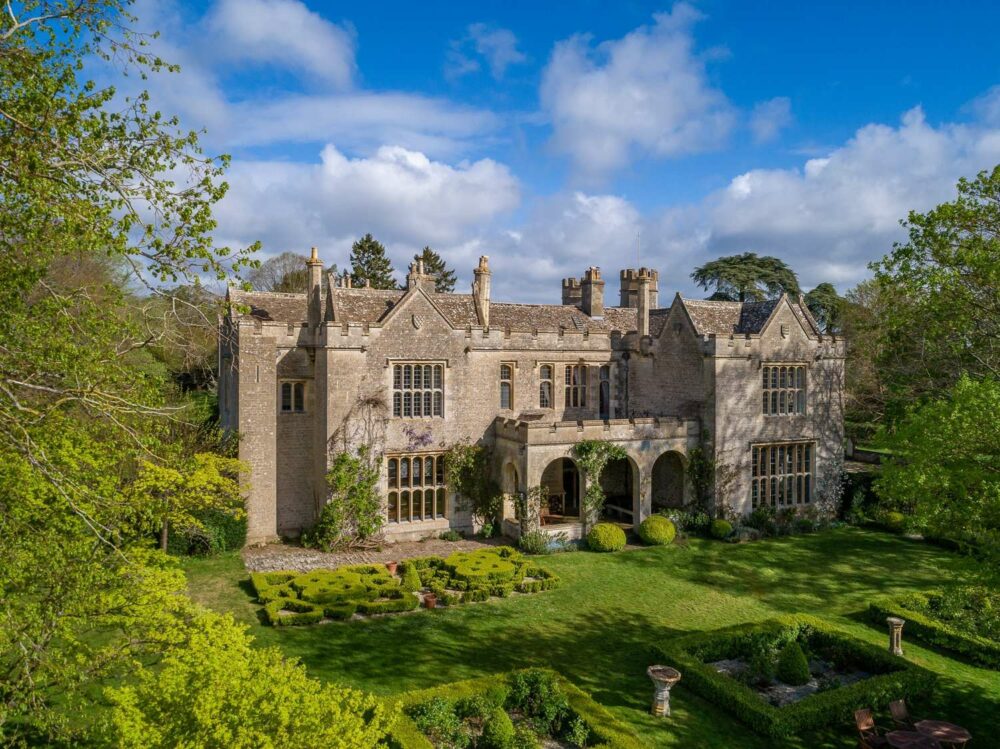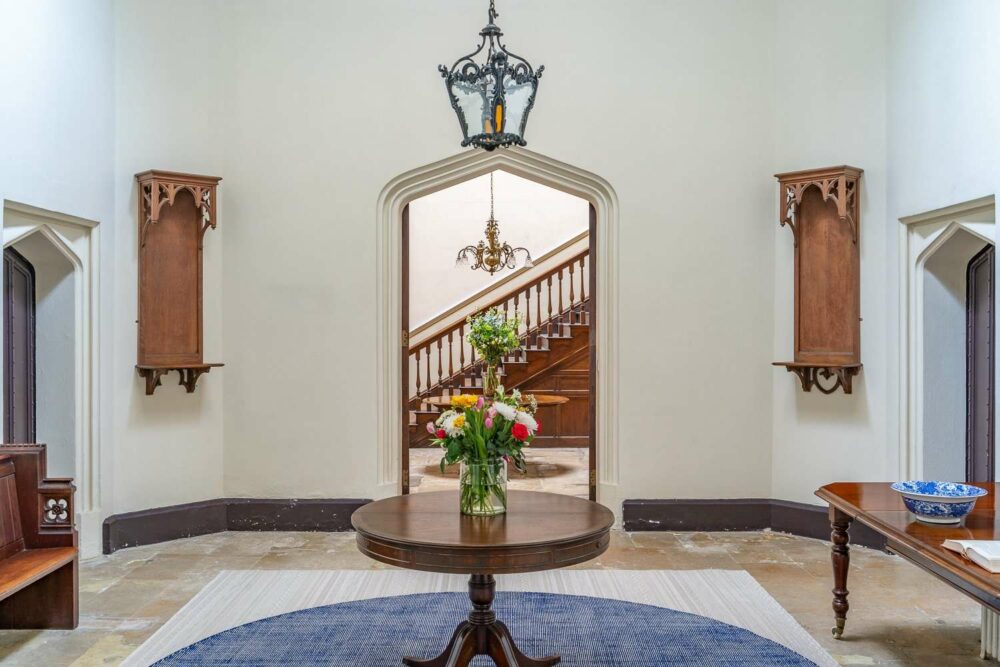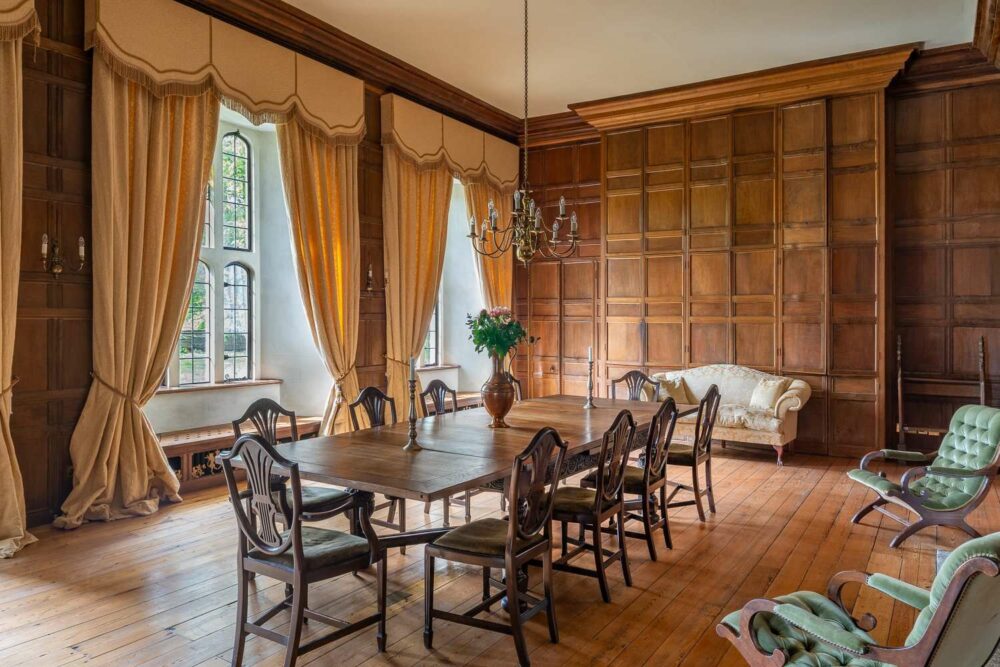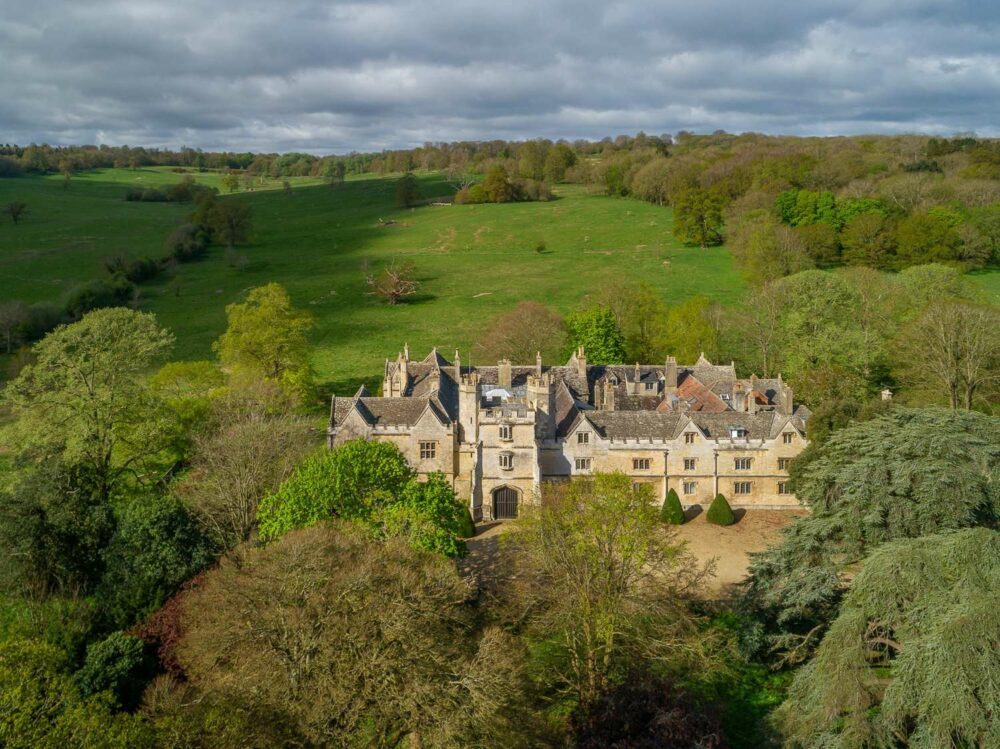About this property
Wytham Abbey was described by The Times in 1991 as one of the loveliest houses in England. The Grade I-listed manor house in the Oxfordshire village of Wytham sits in about 23 acres of gardens, woodland and parkland, and is located in the Wytham Conservation Area, three miles to the west of Oxford.
Built predominantly in local limestone, the building today is the result of several centuries of construction and alteration between c.1500 and 1830. Notable external features include gables, oriel windows and battlements, while inside are many fine stained glass panels, marble fireplaces and a large late-Georgian oak staircase. Many significant features were installed during the major re-modelling of 1809 by Thomas Cundy, which endowed the principal rooms with exceptionally spacious proportions and abundant natural light.
Although grand and surrounded by extensive grounds, the setting belies the Abbey’s location, just three miles from Oxford. Whether continuing as a residential events venue or as a family residence, it offers great flexibility
History
The village of Wytham, historically situated in Berkshire, to the west of Oxford, has its origins in the Saxon period. Its name probably means the home in the corner, hemmed in by the angle of the river. The centre of the original settlement may have been further north than the modern village, near Wytham Mill, foundations of old buildings were noted here in 1804.
Magna Britannia covered Wytham in its first volume, originally published in 1806, and credited the house’s construction to a member of the Harcourt family. While there is no documentary evidence confirming when the building was begun, it is generally accepted that it dates to c.1485-1500, most of the three storey gatehouse is primary fabric, and its general appearance is consistent with a date of the late 15th or early 16th century. The Tudor arch of the gateway is typical of the early 16th century, but could equally date from the end of the previous century.
It is known from later sources that the building had a Long Gallery, and it is likely that the original house was adapted to accommodate this fashionable feature of many gentry houses of the late 16th century. The estate passed from the 1st to the 2nd Earl of Abingdon in 1699, and in 1707 the building was one of the notable houses depicted by the Dutch engravers Knyff and Kip in their book Britannia Illustrata.
Relatively little work was carried out to the building in the 18th century, and in 1779 Mr Urban recorded his impressions of its antique appearance: The embattled tower in the centre is surmounted by two octangular turrets, and the edifice itself surrounded by a moat. The old hall remains in its ancient state and I must own that upon my first entrance, I beheld with romantic pleasure the vestiges of former hospitality and munificence.
In 1807, the 5th Earl of Abingdon salvaged fabric from the old Rycote House, which he also owned, prior to its demolition, in preparation for the rebuilding of Wytham Abbey. Thomas Cundy’s work on the building took place in 1809, and several of the large spaces he created, including the entrance hall, stair hall and library remain relatively unaltered. It was also at around this time that the name Wytham Abbey was first attached to the house. Whether the building was given this name because of the legend of the pre-Norman nunnery that decamped to Wytham, or because of a general romantic interest in the medieval that characterised the era, is not known.
By the end of the 1820s, the exterior of the building had been significantly altered once again, in what Pevsner calls a sensitive collegiate Gothic style, and this work, likely carried out by John Buckler or his son John Chessell Buckler, gave the house most of its present appearance.
In 1923, the 7th Earl of Abingdon sold the Abbey to Raymond ffennell, who made further but comparatively modest alterations, these included the addition of the loggia at the south end, and a small extension to the rear of the butler’s house.
Local information
- The secluded location of Wytham Abbey is exceptional. A broad area to the west of the city of Oxford has remained largely untouched, which means that, although the house is only a few miles from the city centre, Wytham is protected by countryside on the city side by Port Meadow, the largest area of common land in the county, and on the other by fine open parkland and Wytham Woods.
- Wytham Woods, now owned by the University of Oxford, is protected as a Site of Special Scientific Interest: The site is exceptionally rich in flora and fauna, with over 500 species of plants, a wealth of woodland habitats, and 800 species of butterflies and moths. Wytham Woods are often quoted as being one of the most researched pieces of woodland in the world. While the Woods are publicly accessible, permits are required by visitors.
- The remarkably well preserved village of Wytham retains a strong rural character and has a charming 18th century pub and a small local shop.
Additional information
- Tenure
- House and gardens: Freehold with vacant possession on completion.
- Parkland and paddocks: Leasehold (Expiry 2404).
- Useage
- In July 2023 a change of use was granted for the property from residential (formerly apartments) to a mixed use of ongoing part residential (C3) and use as a research and residential conference facility (C2) for the Effective Ventures Foundation. (P23/V0312/FUL)
- Copy Credit
- With thanks to Nick Wright, Senior Historic Buildings Advisor at Donald Insall Associates.
- Services
- Mains water, drainage and electricity. Oil-fired heating.
- EPC Exempt
- Tenure: Freehold






